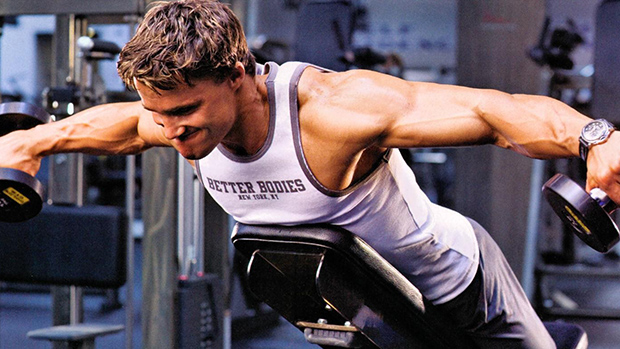Doing exercises using the Zercher position has been trending lately and for good reason. When you place a barbell in the crook of your elbows and perform traditional compound movements, some cool shit happens.
Using this variation for a squat, lunge, or carry is an incredibly effective way to hammer the upper back, traps, biceps, and abs. Getting comfortable with big barbells in the Zercher position will not only build the "yoke," it develops a bulletproof midsection that can stand up to large loads for standard lifts.
The problem with Zercher position exercises is that most lifters are limited by how much they can hold, at least until the upper body muscles catch up to the strength of the lower body. Either the torso or biceps will fail first. This leaves the legs without a great stimulus for strength or hypertrophy.
Enter the Zercher Dumbbell Lunge Drop Set
A great way around this issue is to use a mechanical drop set of sorts. A typical mechanical drop set involves modifying an exercise after the failure point to make it easier and allow for additional reps.
In this case, after you reach failure at the torso/biceps in the Zercher position, you drop the bar, switch dumbbells, and finish off the legs with traditional dumbbell lunges. This allows you to reap all the benefits of using a Zercher position and smash the legs in the same set.
How to Do It
- Do 2 sets of Zercher lunges in your preferred rep range, but leave 1-2 reps in the tank on each set.
- Place dumbbells that add up to 75% of the total load used for the Zercher lunge close to where you ended the first 2 sets.
- On the third and final set, take the Zercher lunge to failure, ditch the barbell, grab the dumbbells, and do lunges until form breaks down.




